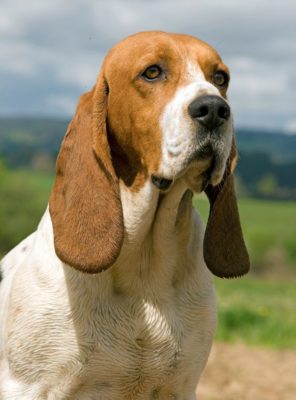Artois Hound
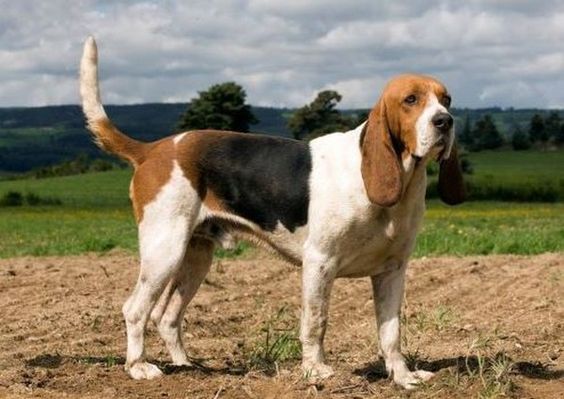
Owners value the Artois Hound because of its hunting instinct and good disposition at the same time. Modern French hunters more and more often choose the Briquet as their assistant. They say that it is a versatile dog. He will be affectionate when alone with you but fierce, dangerous, and independent in his work. Artois Hound has a highly developed sense of smell and a fast grip.
Table of Contents
Breed Information
| Another Name | Chien d’Artois, Picard, Briquet |
| Origin | France |
| Height | Males 53-59 cm Females 51-57 cm |
| Weight | 19-30 kg |
| Fur | Short |
| Color | Dark pale tricolor |
| Lifespan | 11-13 years |
| FCI Classification | Scent hounds and related breeds |
| Group | Hunting dogs |
| Price | From $200 |
Breed Photos
Origin History
The Artois Hound is one of the oldest dogs in Northern France. The beginning of the formation of the breed dates back to the 15th century. Experienced cynologists assume that the breed originated from St. Hubert’s dogs (now the breed is called the Bloodhound). The Artois Hound’s name is directly related to its habitation place, namely the northern province of Artois. At that time, purebred Artois Hounds were permanently crossed with English dogs and almost lost their true representatives. Closer to the XX century, researchers managed to restore “pure” blood of the breed. In the distant past and now, the Briquets (this is another name of the breed) are actively used for hunting hares, roe deer, and even wild boars. The Hound d’Artois was officially recognized by the International Canine Federation in 2017.
Appearance
The Artois Hound is considered a small size hound with a harmonious build. The format is square. The head is large and moderately wide. The occipital tubercle is pronounced. The muzzle is slightly pointed. Quite a powerful neck. The back is strong and firm. The eyes are oval and dark with a melancholic look. Hanging ears, wide and elongated, fit tightly to the muzzle. The tail is planted at the level of the back, long. The coat is short and smooth, tight to the skin. Three main colors predominate: the white background has large dark pale spots to hare or badger color, there can be large black markings. The head is usually pale in color; a smoky tint is acceptable.
Character
Owners value the Artois Hound because of its hunting instinct and good disposition at the same time. Modern French hunters more and more often choose the Briquet as their assistant. They say that it is a versatile dog. He will be affectionate when alone with you but fierce, dangerous, and independent in his work. Artois Hound has a highly developed sense of smell and a fast grip. It works the trail very quickly and locates prey. It is usually followed by a long and loud “victory” bark.
Artois Hounds are not aggressive at all. They are excellent with children and are ready to spend several hours a day around them, playing various games. However, if the Artois Hound does not like anything, it will quietly walk away from the joint fun. They are poised and friendly to strangers, so they are not suited as a watchdog. Also, owners note the dog’s incredible attention to detail. It is sure to raise its voice if it sees something suspicious immediately. The breed is suitable for housing in an apartment and in a private home (but a private home will be much more comfortable since Artois Hounds love freedom and active pastime). The hound is often called the “cat’s menace”, so it is recommended to watch it more carefully during walks and not let the dog off the leash without a special need.
Care
The Artois Hound has a smooth and manageable coat, so grooming is not difficult. A weekly brushing will be enough. Use a special brush with hard or rubberized bristles. It is not advisable to bathe often; it is better to wipe the dog with a wet brush or towel in case of dirt. Bathing with shampoo is recommended about once every few months. To avoid ear problems, keep an eye on his ears and clean them several times a week. Do the same with your pet’s eyes. Every two months, trim his claws if they are not shrunk down sufficiently.
Training
The Artois Hound is quite an independent dog. It is also very prone to indifference and domination over the owner. If you are not confident in your abilities, it is better to entrust the Artois Hound training to an experienced dog trainer. You will need patience and leadership skills so that the dog will understand who the authority is and who must be listened to. Early socialization is necessary.
The Artois Hound is intelligent and quick-witted, with a good memory, which will be a definite plus in learning new commands. The breed needs long walks and physical activities, will not mind keeping you company during jogging and even hiking.
Common Diseases
Artois Hounds are endowed with unprecedented energy and curiosity, and good health with a strong immune system. They are resistant to many hereditary diseases, but there are a number of diseases that are specific to the breed:
- hip dysplasia;
- various ear infections (suffer from this because of the peculiar structure of the ear);
- lens displacement;
- fungus (infections of the nail plate).
Nutrition
The Artois Hound is undemanding in food. Both natural food and dry food are suitable. The food should be premium class. It contains all the necessary vitamins that contribute to the normal formation and health of the dog.
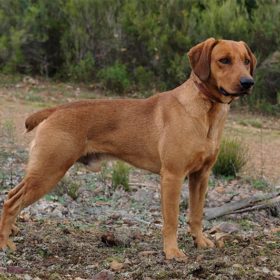 Segugio Maremmano
Segugio Maremmano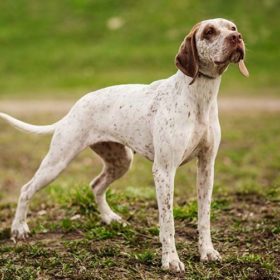 Braque du Bourbonnais
Braque du Bourbonnais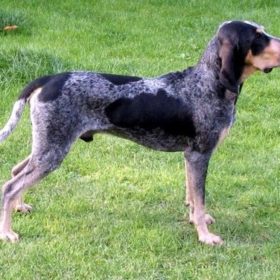 Grand Bleu de Gascogne
Grand Bleu de Gascogne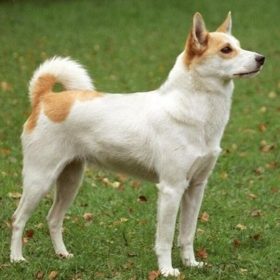 Norrbottenspets
Norrbottenspets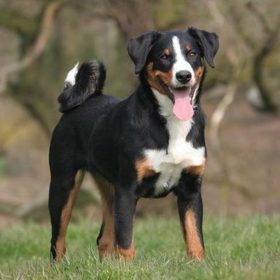 Appenzeller Sennenhund
Appenzeller Sennenhund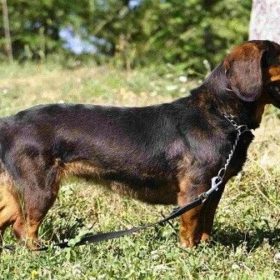 Alpine Dachsbracke
Alpine Dachsbracke
